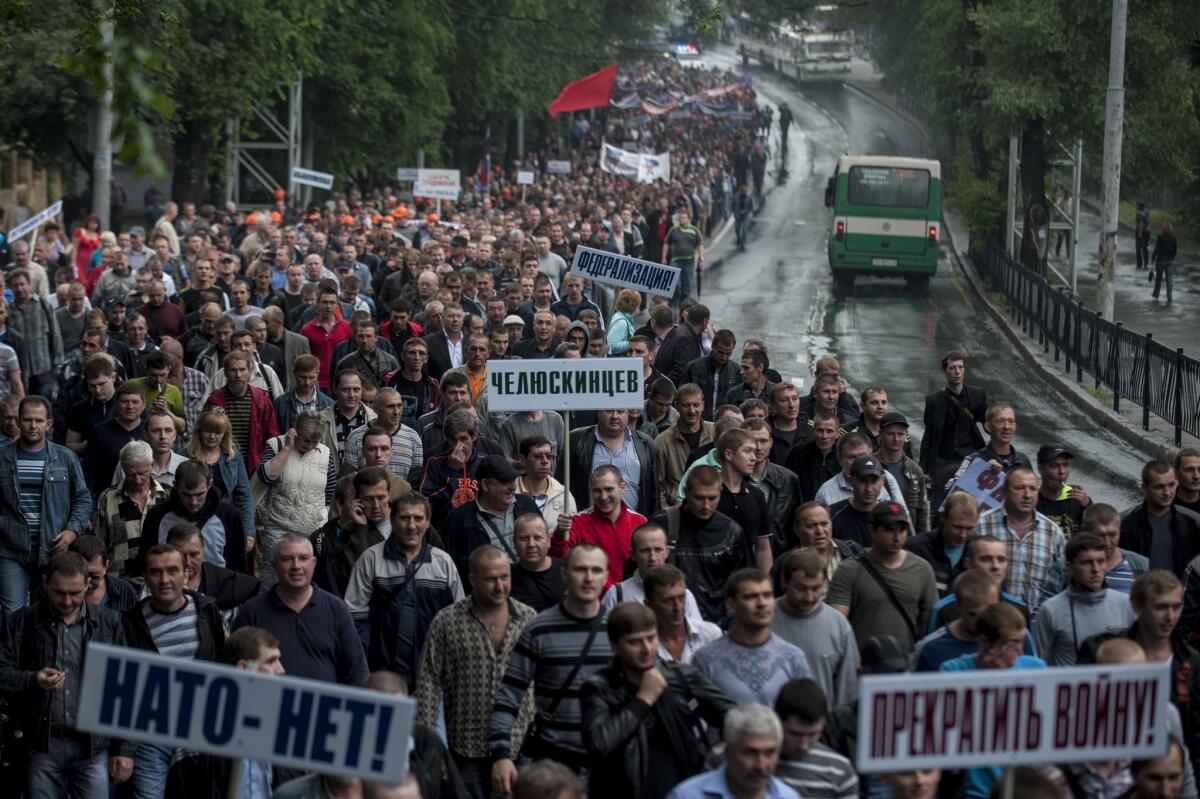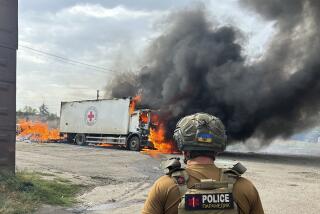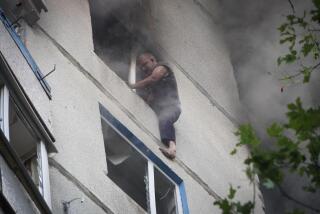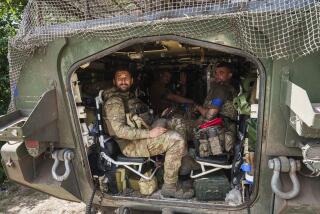U.N. warns pro-Russia separatists leading Ukrainians down ‘dead end’

Killings, abductions and torture have escalated so intensively in the eastern Ukraine areas occupied by pro-Russia gunmen that “a climate of insecurity and fear” now prevails in the region, a United Nations human rights monitoring team reported Wednesday.
The report by the 34-member team in Ukraine since March prompted U.N. human rights chief Navi Pillay to urge the separatist gunmen to “stop taking themselves, and the people living in their regions, down this dead end, which is leading simply to misery, destruction, displacement and economic deprivation.”
“All they have achieved is a climate of insecurity and fear which is having a hugely detrimental impact on many thousands of people,” Pillay said, pointing to the team’s calculation that 356 died in the separatist-held areas of eastern Ukraine between May 7 and June 7.
There have been more than 200 incidents of torture alleged by those detained in the rebel-held Donetsk and Luhansk regions, the U.N. report said. The monitors were alluding to those captured and detained by the pro-Russia militants in control of at least a dozen towns and cities as well as by Ukrainian nationalist gunmen drawn to the region to retaliate against the fighters that Kiev authorities say are armed and instigated by Russia.
Armed and masked separatists began descending on eastern Ukraine local government buildings, armories and police stations in March, after Russian President Vladimir Putin sent troops to Ukraine’s Crimea area. Russia annexed the strategic peninsula on March 18, two days after a purported referendum on independence.
The Moscow-allied gunmen who have proclaimed the Donetsk and Luhansk regions independent of rule from Kiev have asked to join their territory to Russia but Putin hasn’t acknowledged those appeals.
Under the pressure of Western sanctions and threats of more withering measures to come, Putin has backed off open support for the separatists while maintaining a massive troop presence on Russia’s border with Ukraine. Russian volunteers and mercenaries have flooded into Donetsk and Luhansk to take up arms with their militant allies and funneled in weapons, including armored personnel carriers and reportedly Russian T-64 tanks.
Ukrainian military forces have been waging an ineffectual “anti-terrorist operation” aimed at recovering control of the occupied regions, which the Defense Ministry in Kiev says has cost at least 125 soldiers their lives. At least as many gunmen fighting against the Ukrainian government have died since the operation was launched in early April.
“We’re talking about a reign of fear, if not a reign of terror, in those pocket areas,” said Gianni Magazzeni, head of the European department of the U.N. Office of the High Commissioner for Human Rights. He made the remarks at a news conference in Geneva where the Ukraine monitors’ report was presented Wednesday.
Pillay said in the report based on the monitors’ findings that more than 34,000 people have been displaced by the fighting. Russian Foreign Minister Sergei Lavrov said this month that more than 30,000 refugees from the conflict areas in Ukraine had relocated to Russia’s Rostov region.
Thousands more in the separatist-occupied areas would like to escape “as soon as they can safely move,” the report noted.
The Ukrainian government last week announced it was creating evacuation corridors to help civilians leave the embattled regions in convoys.
The 58-page U.N. report also cited incidents of “photographs and videos being misused for propaganda purposes.” It didn’t name the offending media but the examples listed served to bolster the Russian state-controlled media’s portrayal of the Ukrainian government campaign to reclaim territory from the separatists as a criminal attack on civilians.
The misused images included a photograph of a wounded child in Syria presented as a victim of Ukrainian troops who retook Donetsk airport last month, and a video of Ukrainian helicopters with U.N. markings that was filmed earlier in another country and “had nothing to do with the current events in Ukraine.”
Russia Today television carried a report on the U.N. monitors’ findings that mentioned only their intent to further investigate a May 2 clash in the Black Sea port of Odessa in which 50 pro-Russia gunmen were killed when the building from which they were positioned was firebombed. The network cited a Russian Foreign Ministry statement that lamented what Moscow authorities consider a disproportionate arrest of the pro-Russia militants in the Odessa “massacre.”
Russian government officials and news media refer to the separatists as peaceful “pro-federalization activists” seeking constitutional changes that would accord more autonomy to Ukraine’s regional governments.
Follow @cjwilliamslat for the latest international news 24/7
More to Read
Sign up for Essential California
The most important California stories and recommendations in your inbox every morning.
You may occasionally receive promotional content from the Los Angeles Times.











